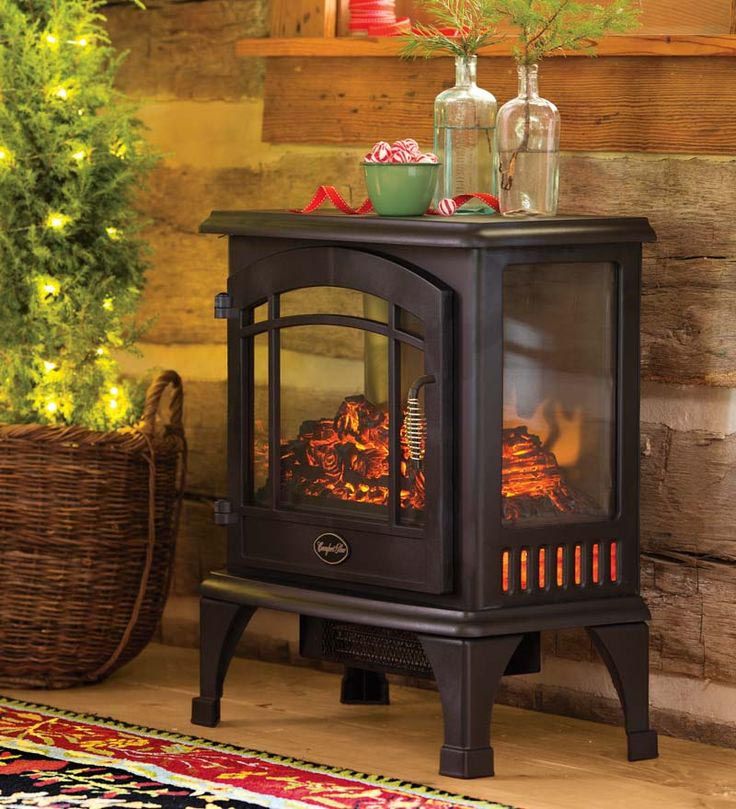 Making the house warm and cozy is desirable for all house, where everyone likes to congregate for warmth and family meetings. They are a place to feel safe and secure, to entertain, and to warm the home. This can be done by installing warmer devices within the house, the most common one is room heater and fireplace. Herewith the description and the comparison between the two.
Making the house warm and cozy is desirable for all house, where everyone likes to congregate for warmth and family meetings. They are a place to feel safe and secure, to entertain, and to warm the home. This can be done by installing warmer devices within the house, the most common one is room heater and fireplace. Herewith the description and the comparison between the two.
Room Heaters
Room heaters are used to heat a small space and are normally portable or fitted to a wall. Most room heaters use gas or electricity.Room heaters are convenient appliances that provide focused and localized heat which is particularly suitable in a room for people that are elderly, ill or with limited mobility. But they can be expensive.
They consume a lot of gas or electricity if used to heat up space quickly, and are likely to cost a lot more than a central heating system.Ideally, room heaters should only be used as a secondary or supplementary source of heat. Even then, you should use the right heater for the space you want to heat, and carefully control the temperature and the time you have the heater on. Heaters that have these controls are often cheaper to run.
Fireplace
In general term, a fireplace is a structure made of brick, stone or metal designed to contain a fire. Fireplaces are used for the relaxing ambiance they create and for heating a room. Modern fireplaces vary in heat efficiency, depending on the design. Currently, there are 3 types of fireplaces namely, electric, gas and the classic fireplace.
Room Heater vs Fireplace
Electric fireplace,Electric fireplaces have really made a niche for themselves in the last several years. You see them on the shelves in many big box stores, and they are a “hot” commodity (pun intended).
Electric units have a lot going for them. They are energy efficient and do not release any pollution into the air. Some models work like a space heater but are much safer and have a nice, lifelike flame. They are safe for kids and pets; they are cool to the touch because the heating element is tucked inside the unit, while a blower forces the warmed air out into the room.
They have other amenities as well. For example, you can run the flame without the heat and vice versa. Some units have timers that can turn themselves on and off once the timer is set. Most electric units come with a remote control as well, and best of all, you can put them in any room in the house because they do not require a chimney. The only maintenance for an electric fireplace is an occasional vent dusting.
Gas fireplace, Gas fireplaces will provide a little more ambiance than an electric unit. The fire is real and works like a gas oven, with the burner hidden by ceramic logs that spread the fire and make it look like a real wood fire.
Gas fireplaces burn either natural or propane gas. They burn pretty clean but do produce some carbon monoxide, so they need a chimney. This is where the cost can increase. You must check the codes in your specific area but most chimneys will require professional installation. Once it is installed, there is, of course, no moving it to another room, so you must make sure the location is perfect.
Because there is a real flame, gas fireplaces do get very hot and can burn you or anything near the hearth. Even if there is a glass front on the unit, the glass will get very hot. Gas units also come with a blower and can push warm air into the room, but keep in mind that there is a chimney, so you will lose some heat to the outdoors. Some models can also come with a remote control.
Classic fireplace, unless you are building a new home, adding a real wood fireplace is very costly. Like with a gas fireplace, a chimney must be built in addition to the fireplace itself. Even though the smell and sound of a real wood fire are tempting, investigate thoroughly before diving in and dropping cash.
Real wood fireplaces can let a substantial amount of the heat escape through the chimney and also suck out about 10% of the indoor air. There are fortunately ways to make a wood fireplace more efficient. You can have it insulated and add a fan heat exchanger and glass doors, but these add-ons will cost more. Then, besides the building and efficiency costs, there is an ongoing cost of purchasing wood to consider. A real wood fireplace is a significant investment in the long term.
There is also maintenance to take into account. Each time you want to start the fire, there is no simple switch like other models of the fireplace. You will have to build the fire and be responsible for seeing it properly and safely put out. The ashes have to be cleaned out often, and wood fireplaces also require a thorough cleaning once a year (at least). A wood fireplace puts more pollution into the air than any other type of fireplace as well, but it offers the most ambiance with real smells and crackling sounds.
